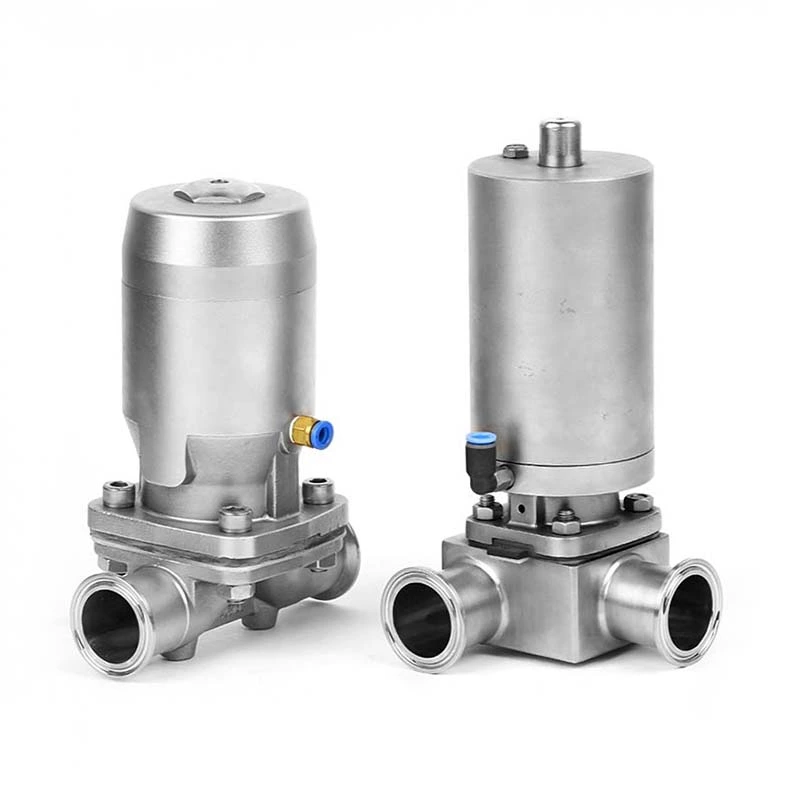Understand The Application Fields And Structural Characteristics Of Sanitary Diaphragm Valves
Understand the application fields and structural characteristics of Sanitary Diaphragm Valve
Understand the application fields and structural characteristics of sanitary diaphragm valves. Application fields of sanitary diaphragm valves:
1. The diaphragm made of soft seals such as rubber or plastic has good sealing performance. Since the diaphragm is a wearing part, it should be replaced regularly depending on the characteristics of the medium.
2. Limited by the diaphragm material, the diaphragm valve is suitable for low pressure and relatively low temperature occasions.
3. Sanitary diaphragm valves can be divided into six types according to the structural form: house type, direct current type, stop type, straight-through type, gate type and right-angle type; the connection form is usually flange connection; according to the drive mode, it can be divided into manual, electric and pneumatic types, among which pneumatic drive is divided into normally open, normally closed and reciprocating types.
4. It is generally not suitable for use in pipelines with temperatures above 60 degrees and for conveying organic solvents and strong oxidizing media, nor in pipelines with higher pressures.
Structural features of sanitary diaphragm valves:
In sanitary diaphragm valves, since the working medium contacts only the diaphragm and the valve body, both of which can be made of a variety of different materials, the valve can ideally control a variety of working media, especially for media with chemical corrosion or suspended particles. The operating temperature of the diaphragm valve is usually limited by the materials used for the diaphragm and the valve body lining, and its operating temperature range is approximately -50 to 17 5℃. The diaphragm valve has a simple structure and consists of only three main parts: valve body, diaphragm and valve head assembly. The valve is easy to disassemble and repair quickly, and the replacement of the diaphragm can be completed on site and in a short time.
The sanitary diaphragm valve has a flexible diaphragm or a combined diaphragm installed in the valve body and valve cover, and its closing part is a compression device connected to the diaphragm. The valve seat can be weir-shaped or the pipe wall of a straight-through flow channel. The advantage of the diaphragm valve is that its operating mechanism is separated from the medium passage, which not only ensures the purity of the working medium, but also prevents the possibility of the medium in the pipeline impacting the working parts of the operating mechanism.
